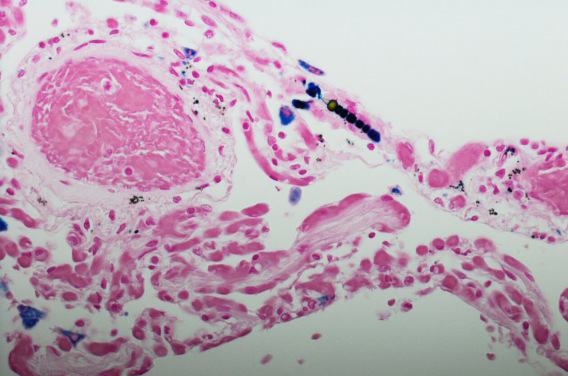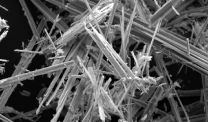New UMD Study Shows How Mesothelioma Can Spread
Research & Clinical TrialsWritten by Sean Marchese, MS, RN | Edited By Walter Pacheco | Scientifically Reviewed By Anna Nowak, Ph.D.

Researchers at the University of Maryland are getting a better idea of why mesothelioma takes decades to develop in the body.
In a 2023 paper published in the journal Environmental Research, a team of researchers at the University of Maryland found that understanding mesothelioma involves the way immune cells “sense” and interact with particles around them.
The study found the geometry of contaminant particles is more important than mineral composition. This means asbestos causes an immune response once the immune system is exposed to the right shape and size of the particle.
Hijacking the Immune System
Researchers believe long and thin asbestos fibers are particularly dangerous because they cause more immune cells to shift focus to asbestos exposure sites within tissue, instead of where they would normally be needed, such as precancerous lesions. This could cause the immune system to ignore other potentially serious conditions.
Researchers call this a “hijacking” of the immune system. They say the hijacking of the immune cell migration system may lead to an infected organ being neglected because all the immune cells are assigned to a single site. This could result in other tissues missing out on much needed healing. Essentially, the immune system is overwhelmed, and the body’s own defenses are diverted from where they’re most required.
“The physical characteristics of a mineral particle can change the behavior of immune cells in the long term, which could be why mesothelioma symptoms take a minimum of 30 to 40 years to manifest,” said study co-author John Fourkas, a professor in the UMD Department of Chemistry and Biochemistry and the Institute for Physical Science and Technology.
This same hypothesis may explain why immunocompromised patients can develop mesothelioma without any known exposure to asbestos. In 2020, the U.S. Food and Drug Administration approved an immunotherapy treatment using the patient’s own immune system to fight mesothelioma cancer cells.
Asbestos remains the primary cause of mesothelioma.
Larger Particles May Be Greater Risk
In another study done by the same researchers at the University of Maryland, the size of the mineral particles also played a role in the danger. Larger and longer particles are more difficult to clear out of the lungs. This means the larger the particle, the more white blood cells are needed to clear it out, once again “hijacking” the immune system.
Ann Wylie, UMD professor emerita of geology, said more research will bring experts closer to determining the underlying processes that lead to cancer from minerals such as asbestos.
“More research about the induction of cancer by minerals is still needed – it’s complicated and requires the expertise of geologists, chemists, physicists and bioscientists,” Wylie said. “But this project and others like it bring us a step closer to figuring out what mechanisms underlie not only mesothelioma, but all types of cancer formations.”






